Preheat the grill
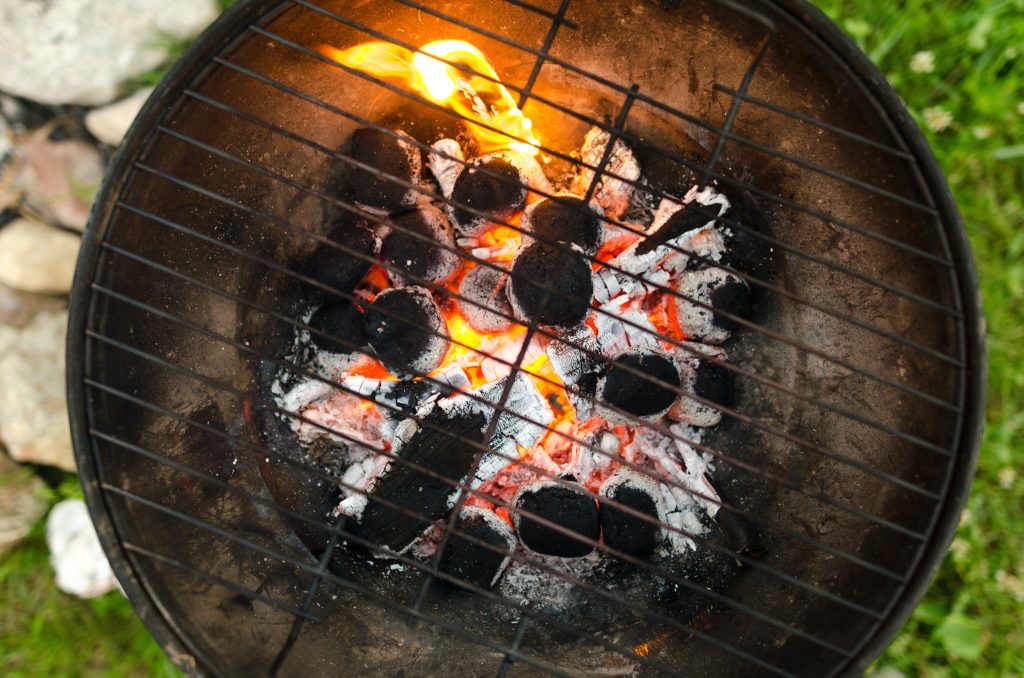
Just like ovens, grills need to be pre-heated to get the most out of your cooking. Chef Sean Brasel from Meat Market in Miami Beach says that charcoal grills tend to produce better overall flavor once the coals have reached optimum temperature and color. “Putting your grilled items on too soon will produce a gassy smell in your foods, so make sure your coals are ready before cooking.”
(As Excerpted from;https://www.eatthis.com/grilling-tips/)
Make the grill naturally non-stick
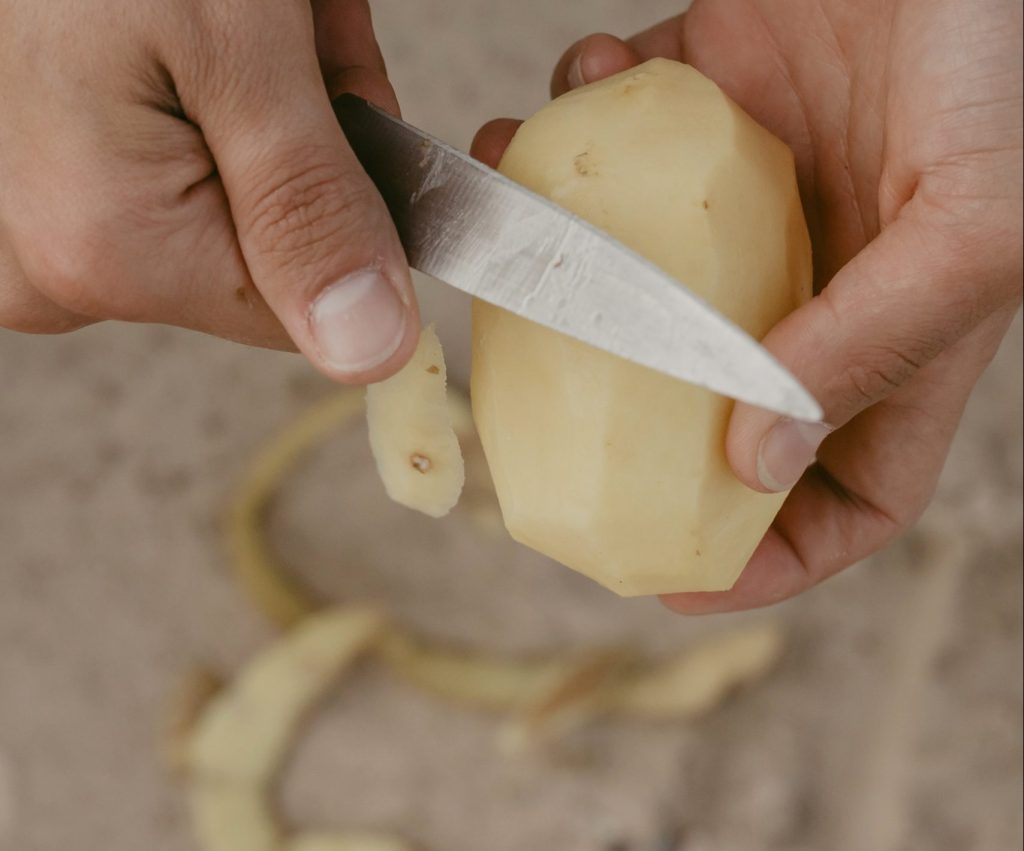
Many people coat their grills with oil to create a non-stick surface for food. But there’s an easier way to create a non-stick surface, says Teddy Bricker, an award-winning chef and the owner of Soursop in Austin. “Halve a potato and rub the hot grates with them to avoid using a lot of oil. This will make the grill naturally non-stick,” Bricker says.
How high should the heat be? According to Josh Thomsen, the executive chef at the Vue 1913 and Edison at the Omni Grove Park Inn, it should be at least 500 degrees Fahrenheit. “When using charcoal, let it burn until it’s covered with a thin coat of gray ash. Hold your hand about six inches above the grate. After three seconds, the [temperature] of the heat should force you to snatch your hand away. When using a gas grill, preheat to high. This takes 10 to 15 minutes. When indirect grilling, preheat the grill to 350 degrees Fahrenheit,” he says.
Need more grilling inspiration? Check out this fun list of 30 Surprising Foods That Taste So Much Better Grilled!
Use gas grills for optimal char
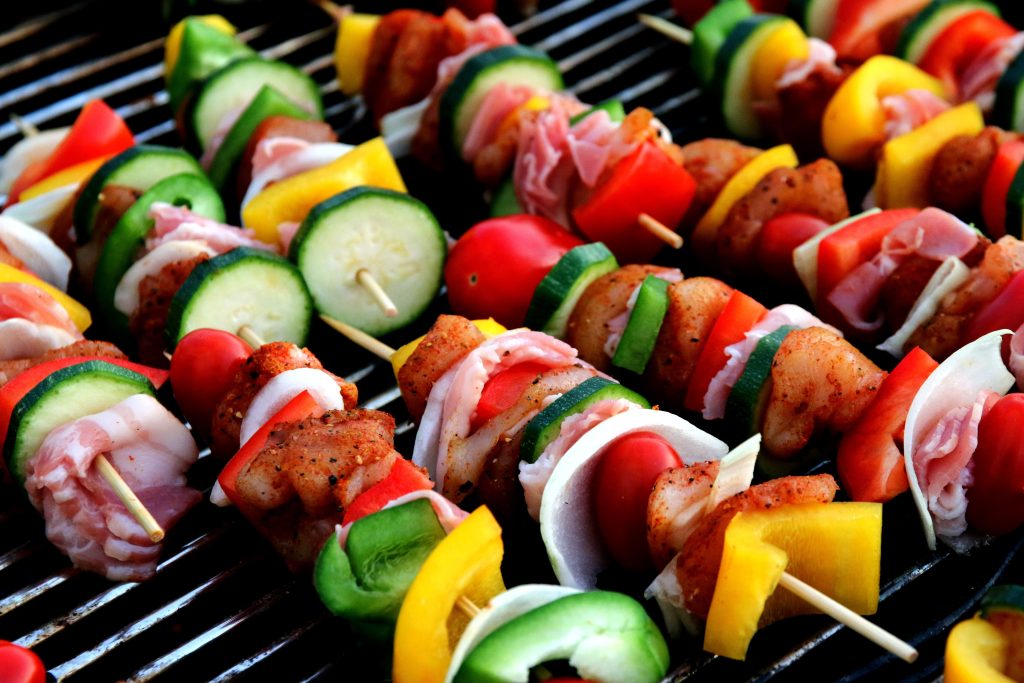
If you prefer a charred flavor, Chef Brasel says gas grills are better than charcoal ones. “Gas grills can produce a higher heat, enabling better sear and char flavor,” he says. But if you’re using a charcoal grill, it’s important to avoid greasing the coals too much to prevent fires and burning. Chef Michael Gallina of Vicia in St. Louis says that vegetables often cook quickly on the grill, so even a moment spent away can take you from perfectly charred to burnt.
But if they end up burnt, don’t throw your veggies away! “You can use them to prepare a charred vegetable stock, which adds a lot of great flavors to sauces and braises,” Gallina says.
Put a lid on it
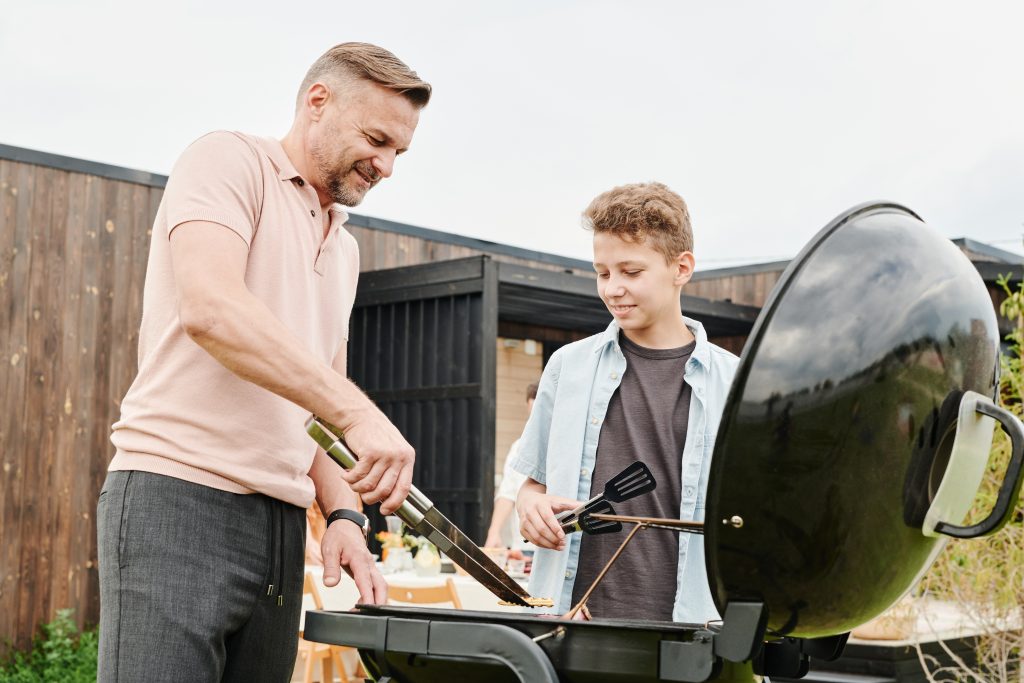
The lids aren’t just there to protect the grills; using them strategically will help you produce smoky flavors. “What’s neat about cooking on a charcoal grill is that different types of charcoal will produce different flavors in your foods. For example, mesquite and hickory charcoal produce a smoked flavor,” Brasel says.
Take advantage of the smoker
Brasel says that charcoal grills with a smoker are great for preparing multiple dishes for long periods because they’re designed with different sections and are optimal for slower roasted foods such as brisket and chicken. “Make sure there’s enough water and humidity in your smoker before letting your food cook for hours. Brined and cured products work best in these conditions. Wrapping slow-roasted veggies in foil also produces an amazing confit effect on corn and sweet potatoes,” Brasel says.
Select the right meats
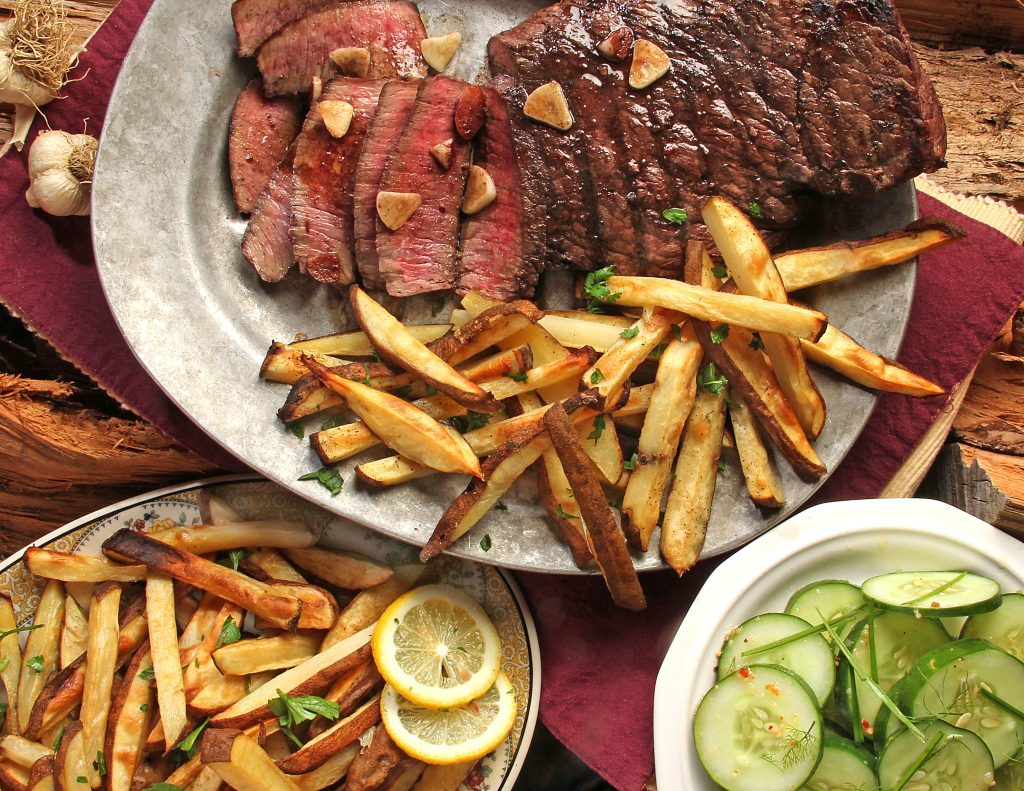
Chef Samuel Hess at Grays Restaurant and Bar at the Hilton in Vancouver, Washington, tells us one of the most important steps before you even grill is choosing the right protein-packed meats. “Meats suitable for quick grilling will yield to the touch and not spring back. Think of the difference between raw chicken breast and pot roast,” he says. “Meats that fit this description and have a little marbling are good choices for healthy grilling. Keep in mind that lean meats will overcook and dry out more quickly.”
Learn more about how to enjoy meat healthily with the Best-Ever Proteins for Weight Loss!
Go for grass-fed meat
We’re all for saving money and watching our wallets, but it pays to spring for high-quality meat if possible. “Free-range, hormone- and antibiotic-free and humanely-treated meat will always taste better than the Soylent Green factory meat most places serve,” says Andy Harris, founder and owner of San Diego’s Grand Ole BBQ y Asado. “Spend time doing your due diligence to ensure you are purchasing the best meat. Also, always use dry rubs and take your time to do it right.”
Get acquainted with lesser-known cuts
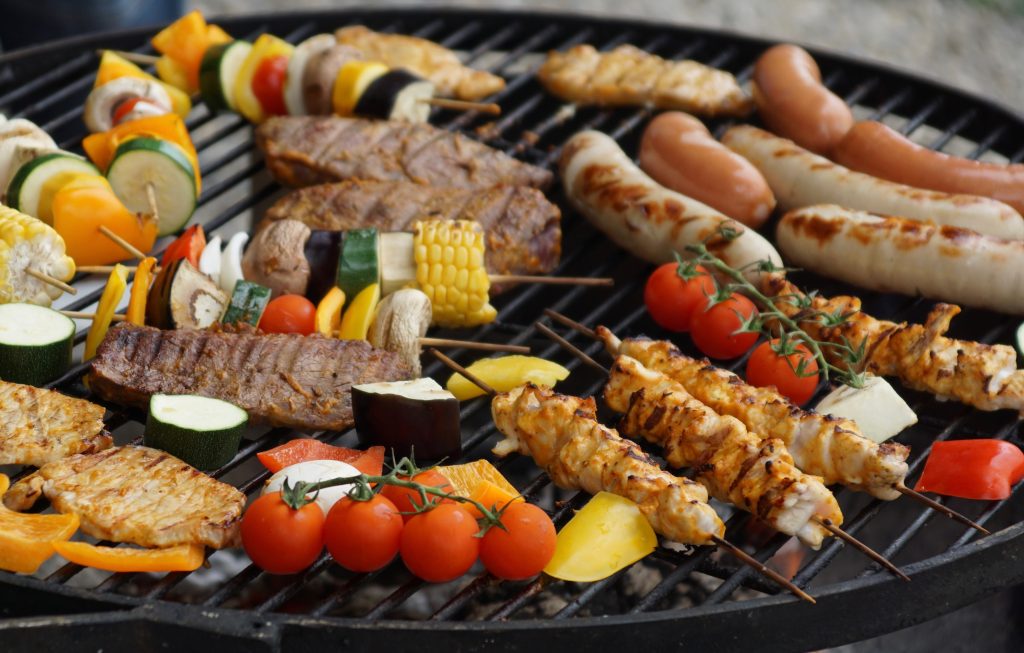
Sirloin steak, beef tenderloin, and rib-eye steaks are exceedingly popular, but they’re hardly the only tasty offerings around. Joe Heitzeberg, CEO of Crowd Cow, a marketplace that sources small-batch, craft meats from independent farms, says, “There are lots of lean cuts on a cow you may not have heard of, and they can be incredibly tender and delicious if you know how to prepare them right.”
One of Heitzeberg’s favorites is the petite tender, also known as the teres major. “The petite tender is a little-known muscle cut from the shoulder that’s flavor-rich, lean, and second only to tenderloin in terms of tenderness. It’s best grilled quickly over high heat,” he says.
And if you’re preparing a new-to-you cut of meat, Here’s Exactly What Temperature Every Cut of Meat Should Be Cooked To.
Safety first
Executive Chef Cory Hoekstra of Disney Springs is a big proponent of staying safe while grilling, and that extends beyond watching yourself (and others) near an open flame. “If you’re unsure about how to use the equipment, always read instruction manuals,” Hoekstra says. And to avoid any kind of cross-contamination, Hoekstra recommends using different utensils with different types of proteins.
Cook on a clean surface
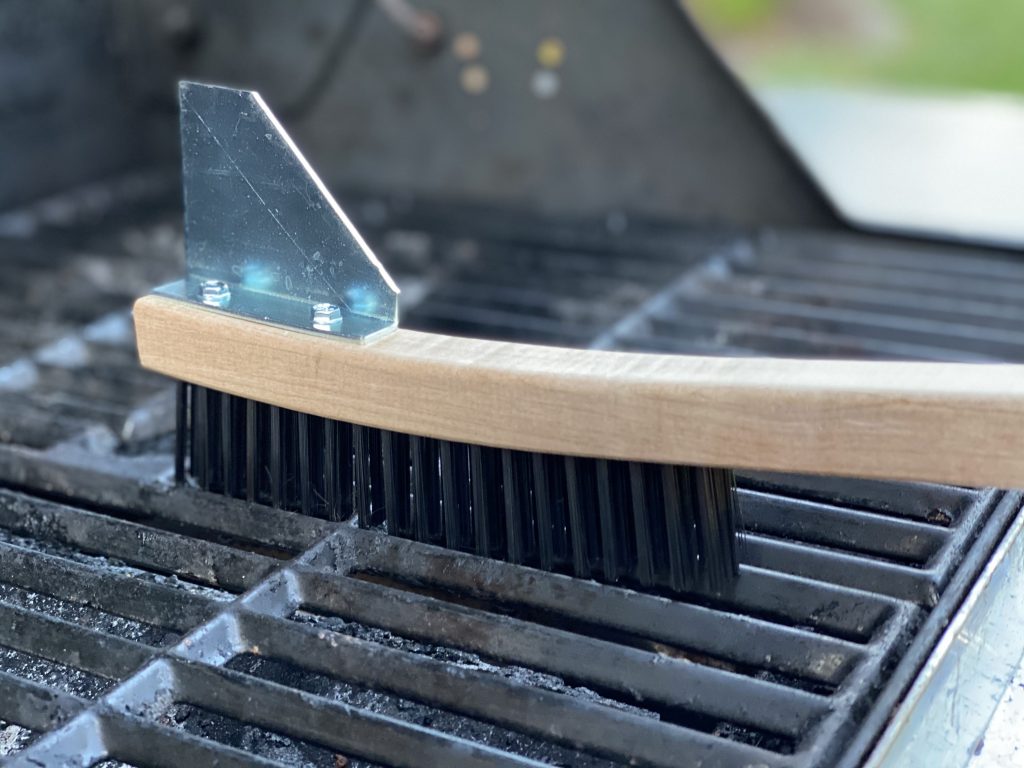
“The first step to achieving any kind of healthful grilling—or cooking for that matter—is to start clean,” says Alex Benes, culinary director of Wood Ranch restaurants in California. “Use a wire brush to clean the grates and remove any food residue or char on them. Then, wipe them down with paper towels or cloth using some vegetable oil. This will also scoop up any broken-off brush bristles,” he says.
Shop the Junior Grill Brush here.

